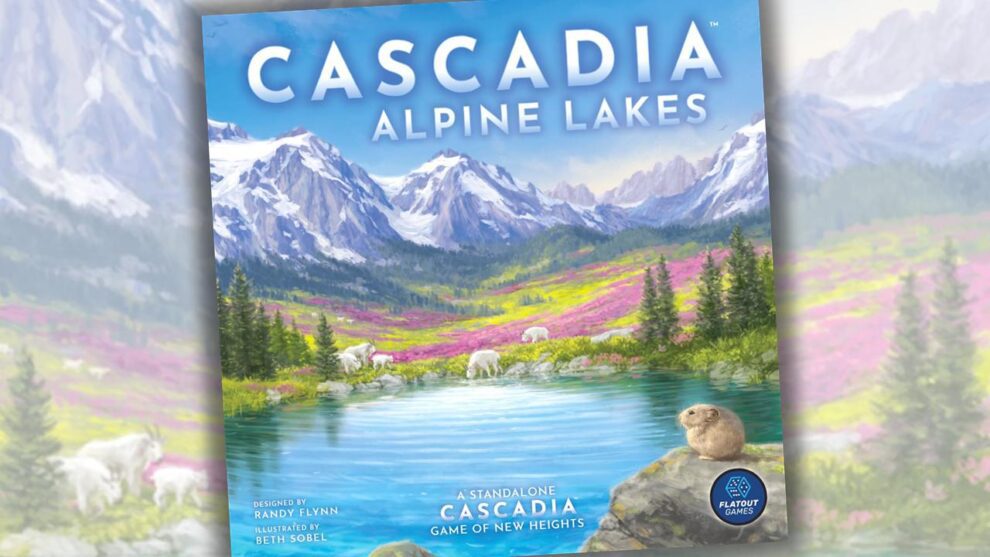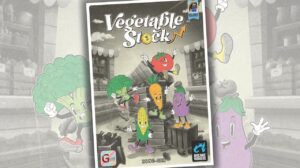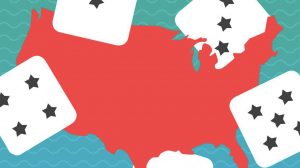Disclosure: Meeple Mountain received a free copy of this product in exchange for an honest, unbiased review. This review is not intended to be an endorsement.
By now you might be tired of hearing me wax poetic about games from Flatout Games: Calico, Verdant, Fit to Print, Point Salad, and of course Cascadia. But it’s not my fault—honest. They just make great games.
Flatout Games newest title, Cascadia: Alpine Lakes, isn’t just a riff on the original, but an all-around improvement. With new animals, terrains, scoring types, and way to place tiles, there’s something for everyone.
Let’s dive in and see what makes Cascadia: Alpine Lakes so great.
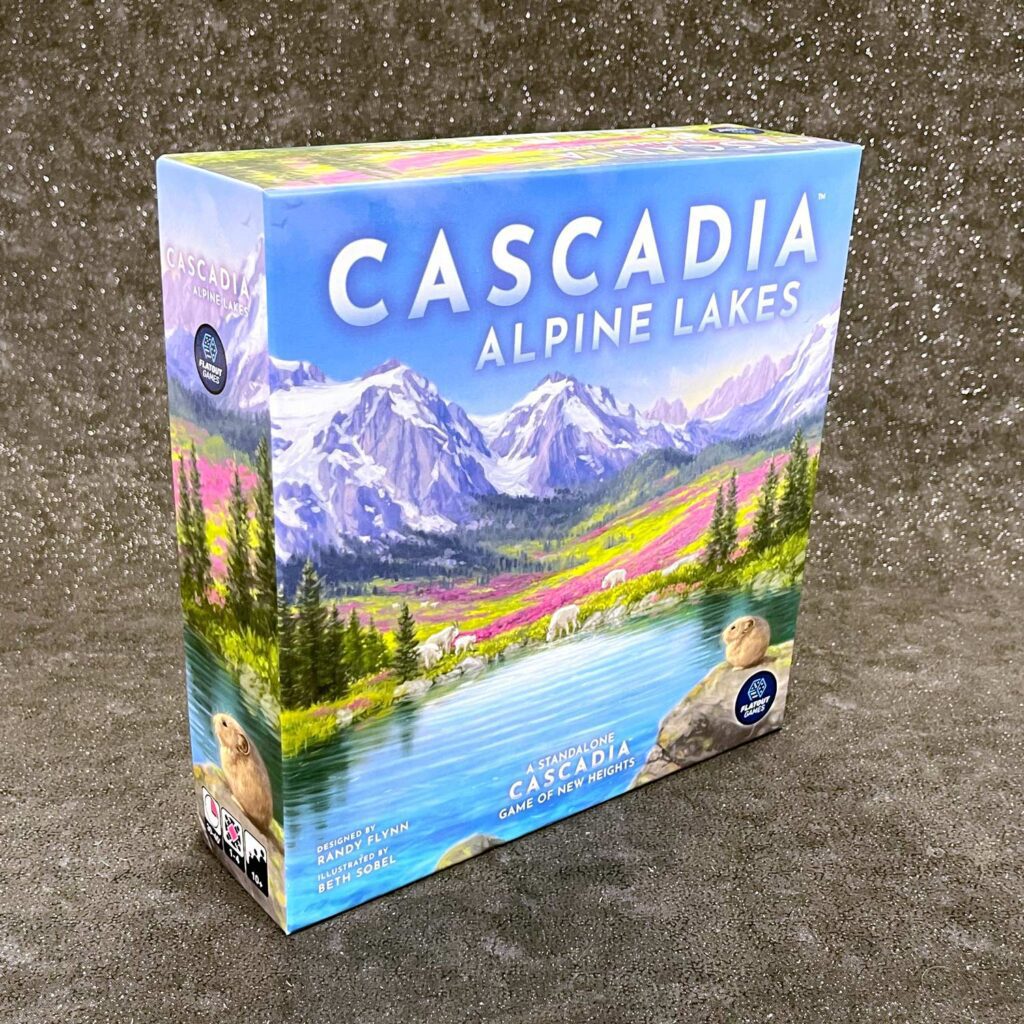
Moving on up
If you’ve played Cascadia before, you’ll find much that is familiar to you. If not, check out my review of the original Cascadia for a high-level overview of gameplay. Four pairs of terrain tile and animal tokens are laid out, with players selecting one of 4 columns on their turn. What immediately stands out are the new animals (Cougar, Eagle, Marmot, Mountain Goat, and the adorable Pika), and the doubled tiles you’ll place into your habitat. Players still lay tiles around their starting habitat tile, but now tiles can be stacked, to form increasingly higher terrains.

There are fewer terrain types: forest, meadow, and glacier; and scoring cards are now limited by type instead of by animal. This means that you can score for cougars, or eagles, but those animals have to be within the confines of one terrain type in order to score. However Cascadia: Alpine Lakes also includes an advanced mode, with environment scoring cards which allow players to earn points across terrain types in addition to the base scoring cards.
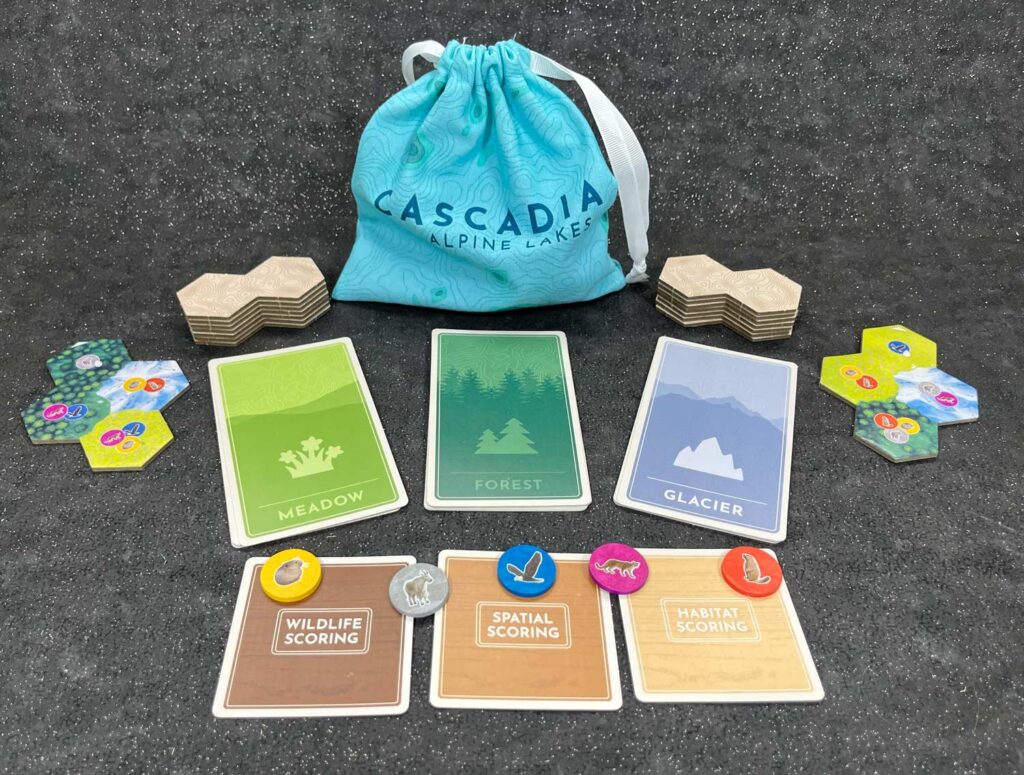
One final notable addition to the terrain tiles are lakes—it is in the name after all.
So let’s take a closer look at the differences between the original game and this newest version.
Double Your Pleasure
If one hex tile is great, then two has to be better, right? In Cascadia: Alpine Lakes, the single hex tiles have been replaced by a single tile composed of two individual hex tiles, and they serve multiple purposes: allowing you to spread your habitat far and wide more rapidly, but also providing a larger base for stacking tiles, which is where many of the points you’re aiming for can be found.
Unlike in the original game, where players earned points for largest groups of terrain, in Cascadia: Alpine Lakes players are trying to get animals to the 3rd level of tiles (or higher), where they earn points for each animal type thus placed. The player with the most animal of each type at level 3 or higher earns additional points.
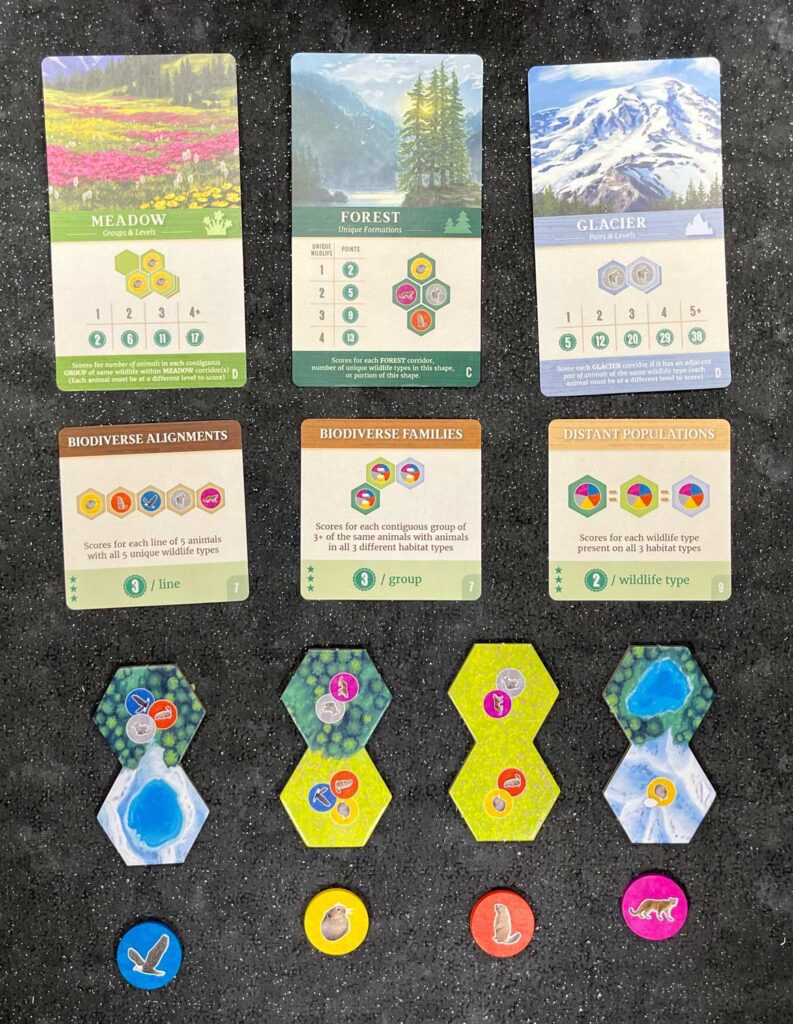
Lakes are also more valuable the higher up they are. A lake earns 1 point per level, and double points if the lake is completely surrounded by other tiles, even other lakes. So a surrounded lake on level 3 would be worth 6 points—snazzy!
In the original Cascadia, the scoring cards were focused on specific arrangements of animals, regardless of terrain type—a line of elk could cross mountains and forests and still score. But in Cascadia: Alpine Lakes the scoring cards are centered around the geography. You still have to arrange animals in particular shapes, but those shapes must be contained within the same terrain type; making it that much more challenging.

Final Thoughts
The Cascadia family of games, and indeed most of the games from the Flatout team, has always been centered around spatial orientation. Being able to scan your play area and determine which of the available tiles would fit best into your countryside is critical. And Cascadia: Alpine Lakes is no different; and in fact I’d say it’s that much harder because of the addition of stacking. Players are able to layer tiles atop each other—even if animals have already been placed there—as long as the new tile has space for that same animal; effectively raising that animal up one level. That means the center of your countryside, which likely has more animals, becomes more difficult to grow and shape.
I love the addition of the lakes, because you’re essentially getting points for doing nothing, but which comes at the expense of losing valuable animal placement spots. But in some cases, based on the particular scoring cards in play, having a lake breaking up a group of animals can earn you more points because you might want multiple groups instead of one larger group.
The artwork showcases the same gorgeous illustrations from Beth Sobel—at this point I think she’s synonymous with the game—and features the same bright colors and soothing landscapes as the other games in this line.
If I were to offer one takeaway from this game is that Cascadia: Alpine Lakes could be considered an advanced version of the original. It’s more challenging all around, and forces players to pay more attention to their landscapes. In terms of complexity, I’d say that Cascadia: Alpine Lakes falls between the original Cascadia by itself, and the original plus the Cascadia: Landmarks expansion.
If you already love Cascadia, but are looking for a greater challenge, then Cascadia: Alpine Lakes is your huckleberry.


